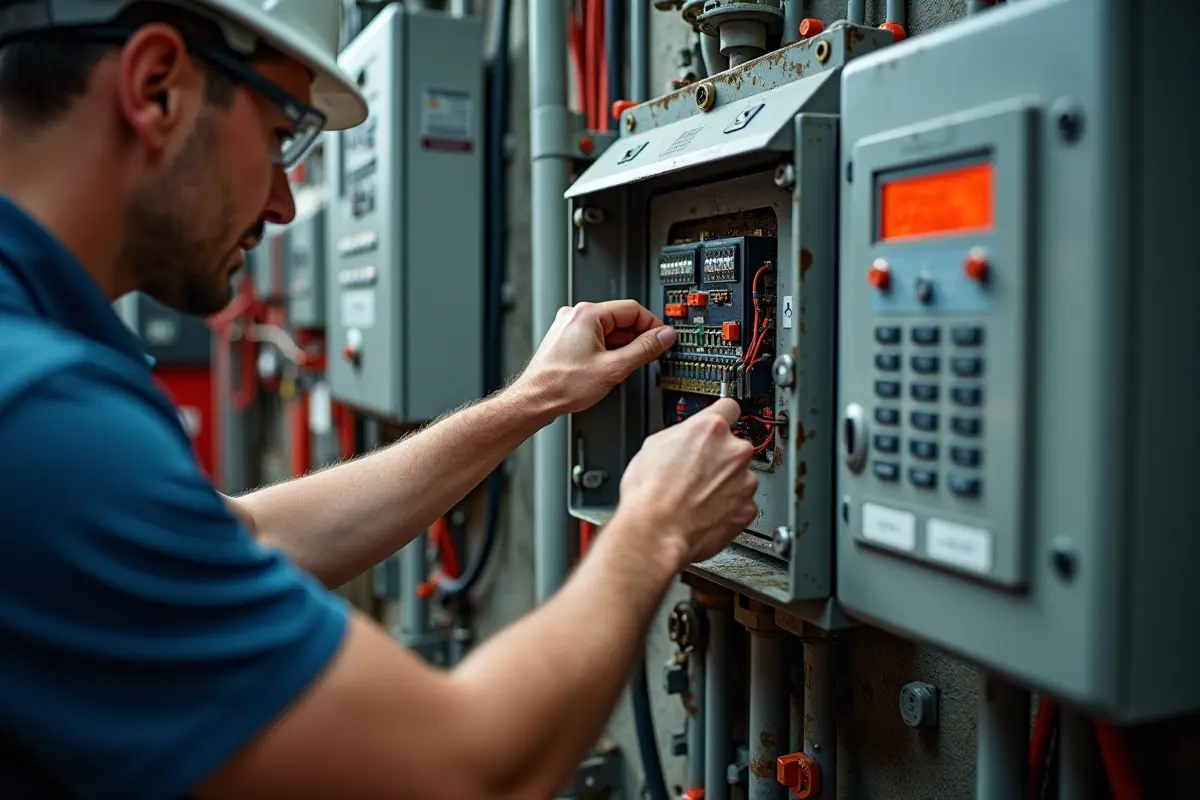Fire alarm technology has changed dramatically over the past two decades, but many buildings are still relying on systems that were installed when flip phones were cutting edge. While those older systems might still beep when they detect smoke, they’re missing critical capabilities that could mean the difference between a minor incident and a catastrophe.
The problem isn’t just that older technology is less reliable, though that’s certainly part of it. The bigger issue is that fire safety regulations have become much more stringent, and buildings that were compliant ten years ago might not meet today’s standards. This puts property owners in a difficult position where they’re potentially liable for incidents that newer systems could have prevented.
Contents
Understanding What Makes Systems Obsolete
Most fire alarm systems installed before 2010 use what’s called conventional technology, where detectors are wired in zones but can’t communicate specific information about their location or status. When these systems activate, they tell you which zone has a problem but not which specific detector triggered the alarm. In a large building, this can add precious minutes to response time while security or fire services try to locate the actual source.
Modern systems use addressable technology, where each device has a unique identifier and can communicate detailed information back to the control panel. This means faster response times, better diagnostics, and the ability to differentiate between different types of emergencies. The difference in emergency response can be substantial, particularly in larger or more complex buildings.
But here’s what catches many people off guard: even systems that aren’t that old can become obsolete quickly due to changes in building codes and regulations. Fire alarm systems installed just five years ago might not meet current requirements for coverage areas, sensitivity levels, or integration with other building systems.
Building modifications also render older systems inadequate. When walls are moved, spaces are subdivided, or new equipment is installed, the fire protection needs of the building change. Systems that provided adequate coverage for the original layout may have dangerous blind spots after renovations.
Legal Compliance and Liability Issues
Fire safety regulations aren’t suggestions, they’re legal requirements with serious consequences for non-compliance. Building owners who fail to maintain adequate fire protection systems face potential criminal liability if someone is injured or killed in a fire that proper equipment could have prevented.
The regulatory landscape has become much more complex in recent years. Local authorities are conducting more frequent inspections and imposing stricter penalties for violations. Insurance companies are also getting more demanding about fire safety requirements, and inadequate systems can void coverage or significantly increase premiums.
Here’s where it gets expensive: retrofitting fire safety systems after receiving a violation notice is always more costly than planning upgrades proactively. Emergency compliance work often requires expedited installation schedules and may limit options for system design, both of which drive up costs significantly.
Professional liability extends beyond just having working detectors. Modern fire safety codes require integration between alarm systems, sprinkler systems, emergency lighting, and building access controls. Older systems typically can’t handle this level of integration, which means they may not meet current legal standards even if all individual components are functioning.
Warning Signs Your System Needs Attention
False alarms are often the first sign that a fire alarm system is struggling. While occasional false alarms can happen with any system, frequent or unexplained activations usually indicate aging sensors, environmental contamination, or electrical problems that will only get worse over time.
Intermittent fault signals are another red flag. If the system control panel regularly shows device faults that clear themselves, or if technicians can’t reproduce problems during service calls, the system is likely experiencing age-related reliability issues that compromise its effectiveness.
Physical deterioration is easier to spot but often gets ignored until it becomes severe. Discolored detector housings, corroded wiring connections, or control panels with faded displays all indicate systems that are past their optimal service life. These visual clues usually appear before functional failures, providing an opportunity for planned replacement rather than emergency repairs.
Response time problems during testing also signal system aging. If detectors take longer to activate than specified in their original documentation, or if signals take longer to reach the control panel, the system may not provide adequate warning during an actual emergency.
The Real Costs of Delaying Upgrades
Many building owners postpone fire alarm upgrades because of the upfront costs, but this short-term thinking often leads to much higher long-term expenses. Older systems require more frequent service calls, have higher failure rates, and need more expensive replacement parts that become increasingly difficult to source.
Emergency repairs are typically three to five times more expensive than planned maintenance or upgrades. When old systems fail during off-hours or weekends, property owners face premium service charges plus potential business interruption costs if the building can’t operate safely without functional fire protection.
Insurance implications can be significant and often overlooked. Many policies include clauses that reduce coverage for buildings with outdated safety systems, and some insurers are refusing to renew policies for properties that don’t meet current fire safety standards. The cost difference between standard and high-risk insurance rates can exceed the cost of system upgrades within just a few years.
Business interruption costs during emergency upgrades can be substantial. Unlike planned installations that can be scheduled around business operations, emergency replacements often require building closures or restricted access that disrupts normal activities and reduces revenue.
Modern Technology Benefits
Current fire alarm systems offer capabilities that simply weren’t available in older technology. Smart detectors can distinguish between different types of smoke, steam, and dust, dramatically reducing false alarms while improving actual fire detection. This increased accuracy translates to fewer disruptions and faster response to real emergencies.
Integration capabilities with other building systems provide enhanced safety and convenience. Modern systems can automatically unlock exit doors during emergencies, shut down HVAC systems to prevent smoke spread, activate emergency lighting, and communicate directly with fire services and building management companies.
Remote monitoring and diagnostics allow property managers to track system status from anywhere and receive immediate notification of problems. This capability is particularly valuable for buildings with limited on-site staff or multiple locations that need centralized monitoring.
Wireless technology options make upgrades possible in buildings where running new wiring would be prohibitively expensive or architecturally challenging. While wireless systems have limitations, they can provide modern fire protection capabilities in situations where conventional wired systems aren’t practical.
Planning Your Upgrade Strategy
The most effective fire alarm upgrades start with professional assessment of current systems and building requirements. This evaluation should consider not just existing equipment condition, but also planned building changes, regulatory trends, and long-term maintenance costs.
Phased implementation can help manage costs and minimize disruption for large or complex buildings. Critical areas can be upgraded first, with less essential zones following as budget and scheduling allow. This approach provides immediate safety improvements while spreading costs over time.
Technology selection should balance current needs with future flexibility. Systems that can accommodate building expansions, integrate with emerging technologies, and adapt to changing regulations provide better long-term value than minimal compliance solutions.
Fire alarm system upgrades represent a significant investment, but the costs of inadequate fire protection far exceed the expense of proper equipment. Modern systems provide better protection, lower maintenance costs, and compliance with current regulations while reducing liability exposure for property owners. The question isn’t whether to upgrade aging systems, but how quickly it can be done safely and cost-effectively.



